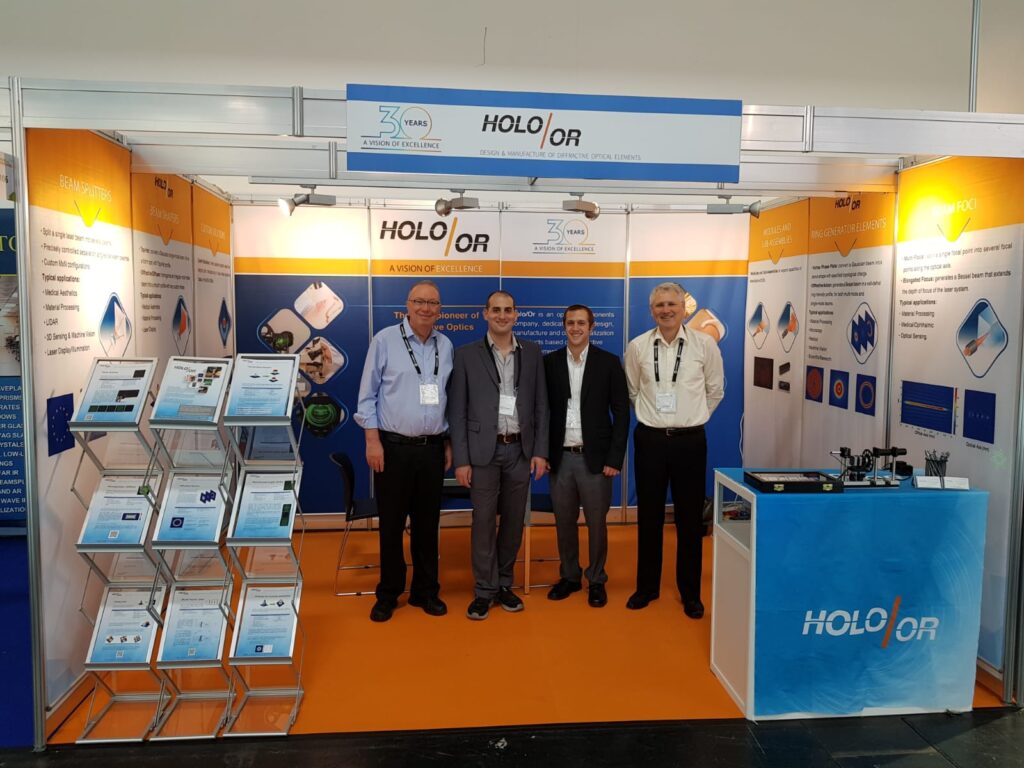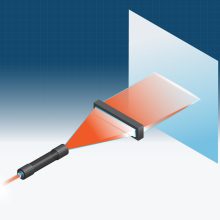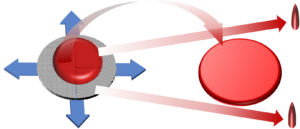Laser World of Photonics Exhibition
Holo/or will be presenting at Laser World of Photonics Exhibition, Munich, Germany on June 24-27.
Our latest technology will be on display at this event.
Laser World of Photonics offers you the chance to meet with our experienced engineers, learn about our products, and get answers to all of your questions.
To schedule a meeting, please contact us or fill the form below. We look forward to meeting you in Munich, Germany!

| Monday, June 24 | 09:00 – | 17:00 |
| Tuesday, June 25 | 09:00 – | 18:00 |
| Wednesday, June 26 | 09:00 – | 18:00 |
| Thursday, June 27 | 09:00 – | 16:00 |
Read more about Laser World of Photonics, Munich

beam shaping workshops:
This year, we are proud to give two special Workshops in the field of Industrial Beam Shaping:
June 24, 13:30-14:30: Industry beam shaping bottlenecks.
June 24, 15:00-16:00: Adjustable function beam shaping methods.
The Workshops will be hosted by our partners, Laser Components GMBH and take place at: Hall B3.
Industry beam shaping bottle necks in application fields:
In our upcoming Workshop during Laser World of Photonics Exhibition, Mr. Jeffrey Fantl will talk about beam shaping needs for industrial applications. The talk will focus on three popular laser applications where beam shaping is a major bottleneck:
- Laser lift off for flexible and flat display processing
- Laser glass cutting
- Parallel laser line scribing
Laser Lift Off (LLO) is a major enabling technology in the production of flexible displays (OLED), flat panel displays and solar cells. The process requires high density, high uniformity UV energy over long lines, posing a major beam shaping challenge as most available lasers at these power levels are multi-mode and cannot be tightly focused.
Laser glass cutting is rapidly gaining market share in the glass cutting market. It is used in the manufacture of Smartphone screens, solar panels and many other consumer products. Laser cutting applications require tight focusing over long focal depths, requiring unique beam shaping approaches involving Bessel like beams or multiple foci in the glass volume. Beam shaping is a major enabling technology for this application, determining rate, cut quality and thickness of material that can be processed.
Laser parallel line scribing is a widely used application of lasers in the micro-electronics and solar cell industries. By utilizing beam shaping to create multiple parallel beams, it is possible to increase throughput significantly. Further beam shaping ,such as flat-top shaping of each split beam, can be used to enhance process parameters and achieve sharp corners and well defined borders.
We will review the main requirements of each laser application, the current state of the art of beam shaping solutions for these applications and the beam shaping development roadmap for these applications.
At the end of the workshop Mr. Fantl would be pleased to answer your questions regarding the topics discussed or other beam shaping issues.
Laser welding is used in a wide range of industrial applications including automotive, aerospace, semiconductors, electronics, medical, power, defence and others. The raw laser beam is not the optimal shape for many industrial applications in general and especially in the field of welding, brazing, soldering, and other similar processes. Compared to other laser material processing applications, these processes stand out in terms of the required laser power (multi kW) and the highly multimode beams often used.
The talk will focus on improving throughput, seam height, strength, and the edge smoothness of the joints with process-specific tailored laser intensity distribution.
We will review welding and brazing applications that already use diffractive beam shaping optics, as well as a few examples where current shaping technique can be replaced by diffractive optics. In addition, we discuss a few novel shaping concepts that can be implemented for welding and brazing applications.
At the end of the workshop Mr. Kaplan would be pleased to answer your questions regarding the topics discussed or other beam shaping issues.




